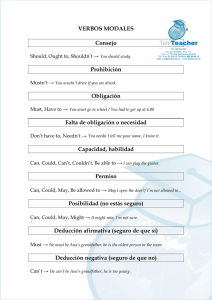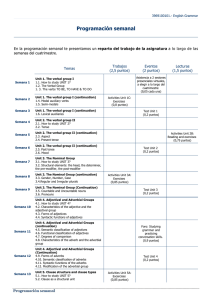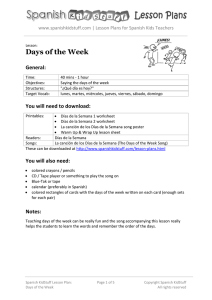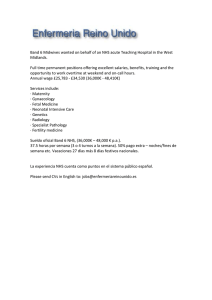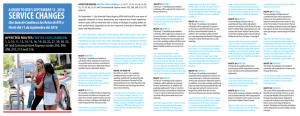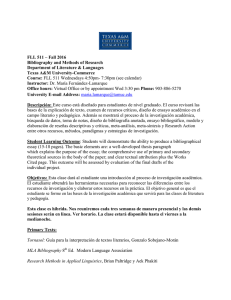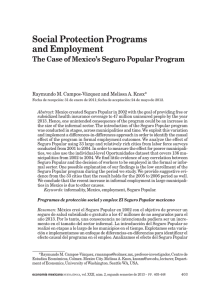My Action Plan - Center for Excellence in Primary Care
Anuncio
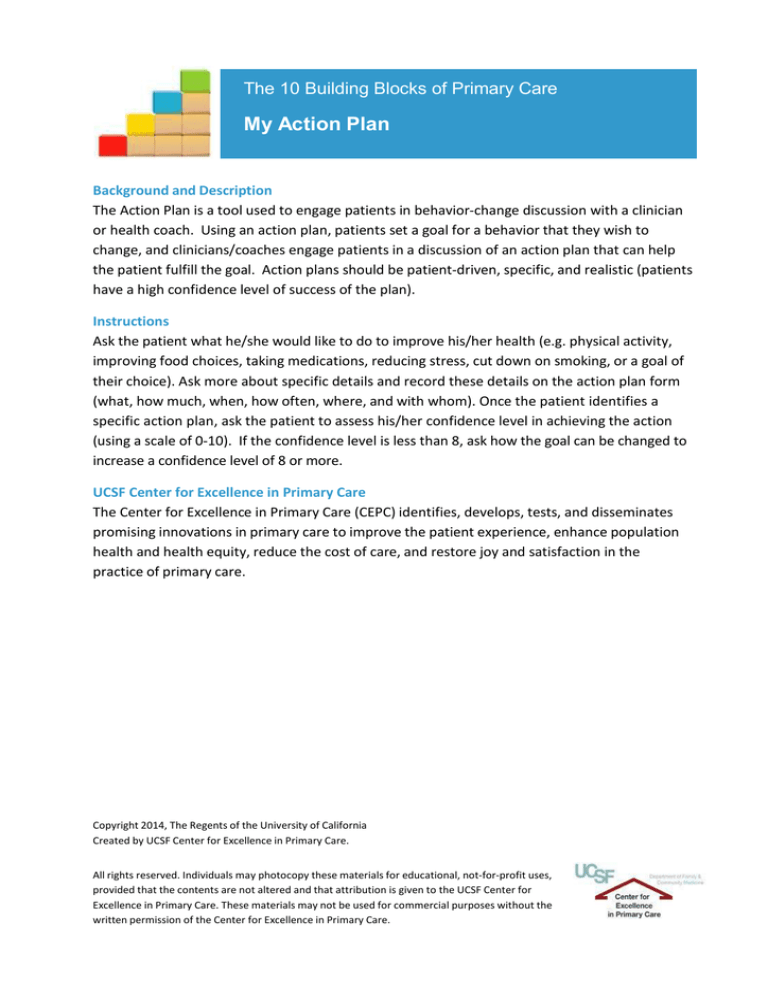
The 10 Building Blocks of Primary Care My Action Plan Background and Description The Action Plan is a tool used to engage patients in behavior-change discussion with a clinician or health coach. Using an action plan, patients set a goal for a behavior that they wish to change, and clinicians/coaches engage patients in a discussion of an action plan that can help the patient fulfill the goal. Action plans should be patient-driven, specific, and realistic (patients have a high confidence level of success of the plan). Instructions Ask the patient what he/she would like to do to improve his/her health (e.g. physical activity, improving food choices, taking medications, reducing stress, cut down on smoking, or a goal of their choice). Ask more about specific details and record these details on the action plan form (what, how much, when, how often, where, and with whom). Once the patient identifies a specific action plan, ask the patient to assess his/her confidence level in achieving the action (using a scale of 0-10). If the confidence level is less than 8, ask how the goal can be changed to increase a confidence level of 8 or more. UCSF Center for Excellence in Primary Care The Center for Excellence in Primary Care (CEPC) identifies, develops, tests, and disseminates promising innovations in primary care to improve the patient experience, enhance population health and health equity, reduce the cost of care, and restore joy and satisfaction in the practice of primary care. Copyright 2014, The Regents of the University of California Created by UCSF Center for Excellence in Primary Care. All rights reserved. Individuals may photocopy these materials for educational, not-for-profit uses, provided that the contents are not altered and that attribution is given to the UCSF Center for Excellence in Primary Care. These materials may not be used for commercial purposes without the written permission of the Center for Excellence in Primary Care. MY ACTION PLAN I DATE: and have agreed that to improve my health I will: 1. Choose ON E of the activities below: 2. Choose your confidence level: How sure are you that you can do the action plan? (if < 7, then change plan) 10 VERY SURE Work on something that’s bothering me: Stay more physically active! 7 SURE 5 SOMEWHAT SURE 0 NOT SURE AT ALL 3. Fill in the details of your activity: Take my medications. What: How much: Improve my food choices. When: How often: Where: Reduce my stress. With whom: Start Date: Follow-Up Date: Cut down on smoking. Best Way to Follow-Up: Action Plan Calendar Draw a in the box for the days that the action plan was set. If the goal for that day is reached, draw a check in the circle. Mon Tue Wed Thurs Fri Sat Sun Week 1 Week 2 Week 3 Week 4 Week 5 Week 6 Week 7 Week 8 Did you face any challenges doing this plan? If yes, explain below. MI PLAN DE ACCIÓN Yo Fecha: y hemos acordado que para mejorar mi salud, voy hacer lo siguiente: 1. Escoja UNA de las siguientes opciones: Trabajar en algo que me este molestando: 2. Escoja su nivel de confianza: ¿Qué tan seguro(a) está usted de poder cumplir con su plan de acción? (si < 7, cambie el plan) 10 Muy Seguro(a) Mantenerme más activo! 7 SEGURO(A) 5 Un poco seguro(a) 0 Nada Seguro(a) 3. Llene los detalles de su actividad: Tomar mis Medicamentos. Qué va a hacer: Cuánto: Mejorar mis decisiones alimenticias. Cuándo: Con qué frequencia: Dónde: Con Quién: Reducir mi nivel de estrés. Fecha de comienzo: Fecha para revisar el plan: Mejor manera para contactarlo(a): Fumar menos. Calendario de Plan de Acción Marque con un círculo ¨O¨ los cuadros de los días que fijó para hacer su plan de acción. Si cumplió su meta para ese día, márquelo con una palomita dentro del círculo. Lunes Martes Miércoles Jueves Viernes Semana 1 Semana 2 Semana 3 Semana 4 Semana 5 Semana 6 Semana 7 Semana 8 ¿Encontró obstáculos haciendo este plan? Explique. Sábado Domingo


